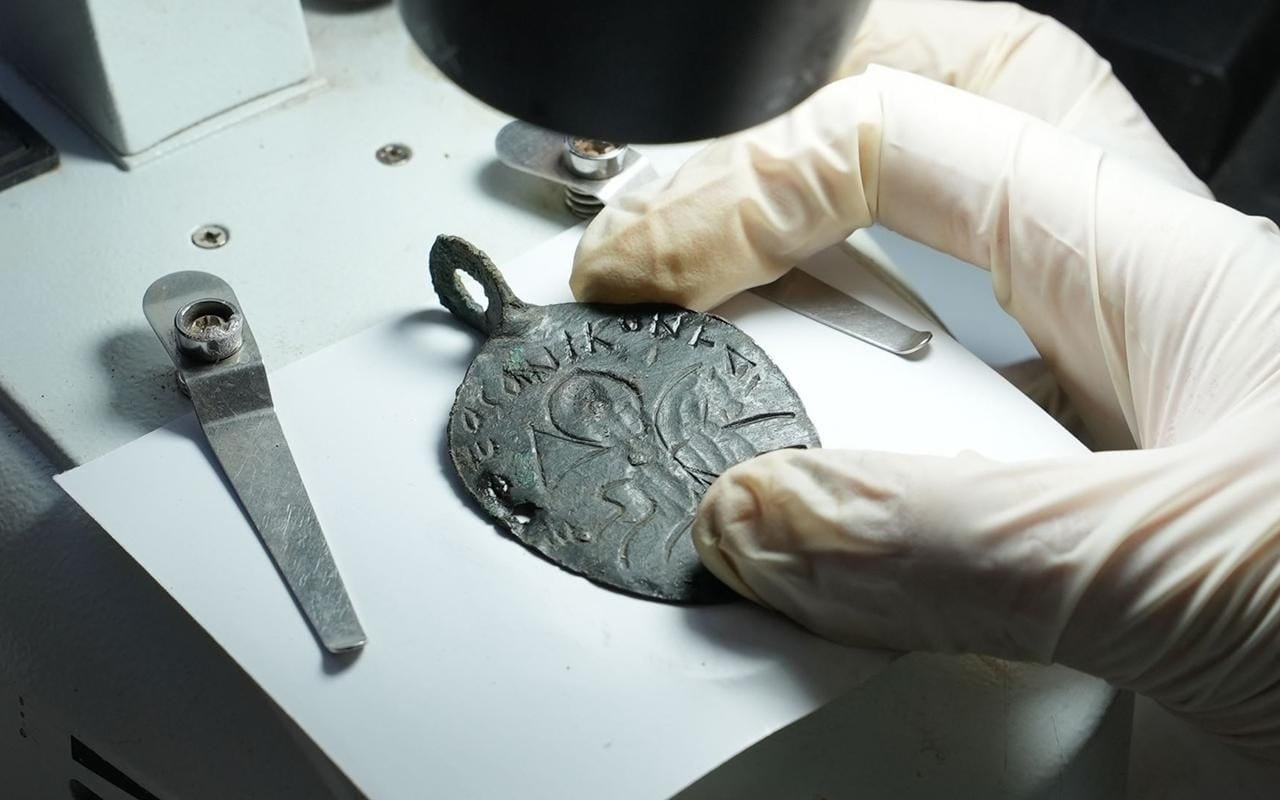Archaeologists have unearthed a remarkable 1,600-year-old pendant in the ancient city of Hadrianopolis, located in the Eskipazar district of Karabük, Turkey. This rare artifact, which dates back to the 5th century CE, features a depiction of the biblical and Islamic figure Solomon on horseback, spearing the Devil. On one side of the pendant, the inscription reads, “Our Lord has overcome evil,” while the reverse bears the names of the archangels Azrael, Gabriel, Michael, and Israfil.
 Close-up of the 1,600-year-old pendant depicting Solomon on horseback, spearing the Devil. Credit: Karabük University
Close-up of the 1,600-year-old pendant depicting Solomon on horseback, spearing the Devil. Credit: Karabük University
The pendant, which is believed to have been used as an amulet, was discovered during excavations led by ᴀssociate Professor Ersin Çelikbaş from Karabük University as part of the Ministry of Culture and Tourism’s “Legacy for the Future Project.” Static graphic analyses and stratigraphic data date the artifact to the fifth century CE.
Dr. Çelikbaş explained its significance, stating:
“This is a highly significant discovery for Anatolian archaeology. Similar examples have not been encountered in this region before. The depiction of Solomon, a figure central to Judaism, Christianity, and Islam, surprised us and highlighted the importance of this artifact.”
Solomon is regarded as a ruler in the Torah and the Bible and as a prophet in Islam. His portrayal on this pendant reinforces his importance across the three Abrahamic religions.
Hadrianopolis, often referred to as the “Zeugma of the Black Sea” due to its intricate mosaics, served as a settlement from the Late Chalcolithic period through the early Byzantine era. It was a significant cultural and military hub, with evidence pointing to the presence of cavalry units.
Dr. Çelikbaş elaborated on the pendant’s potential link to the city’s military history:
“Solomon is also known as the commander of armies. We understand that he was considered a protective figure for the Roman and Byzantine cavalry stationed here.” The imagery of Solomon defeating the Devil may have been a protective symbol for soldiers, invoking divine triumph over evil.
The discovery of this pendant marks the first of its kind in Anatolia. However, a similar artifact has been found in Jerusalem. Dr. Çelikbaş noted that the presence of such artifacts across vast distances underlines Hadrianopolis’s importance as a religious and cultural hub.
Karabük University





